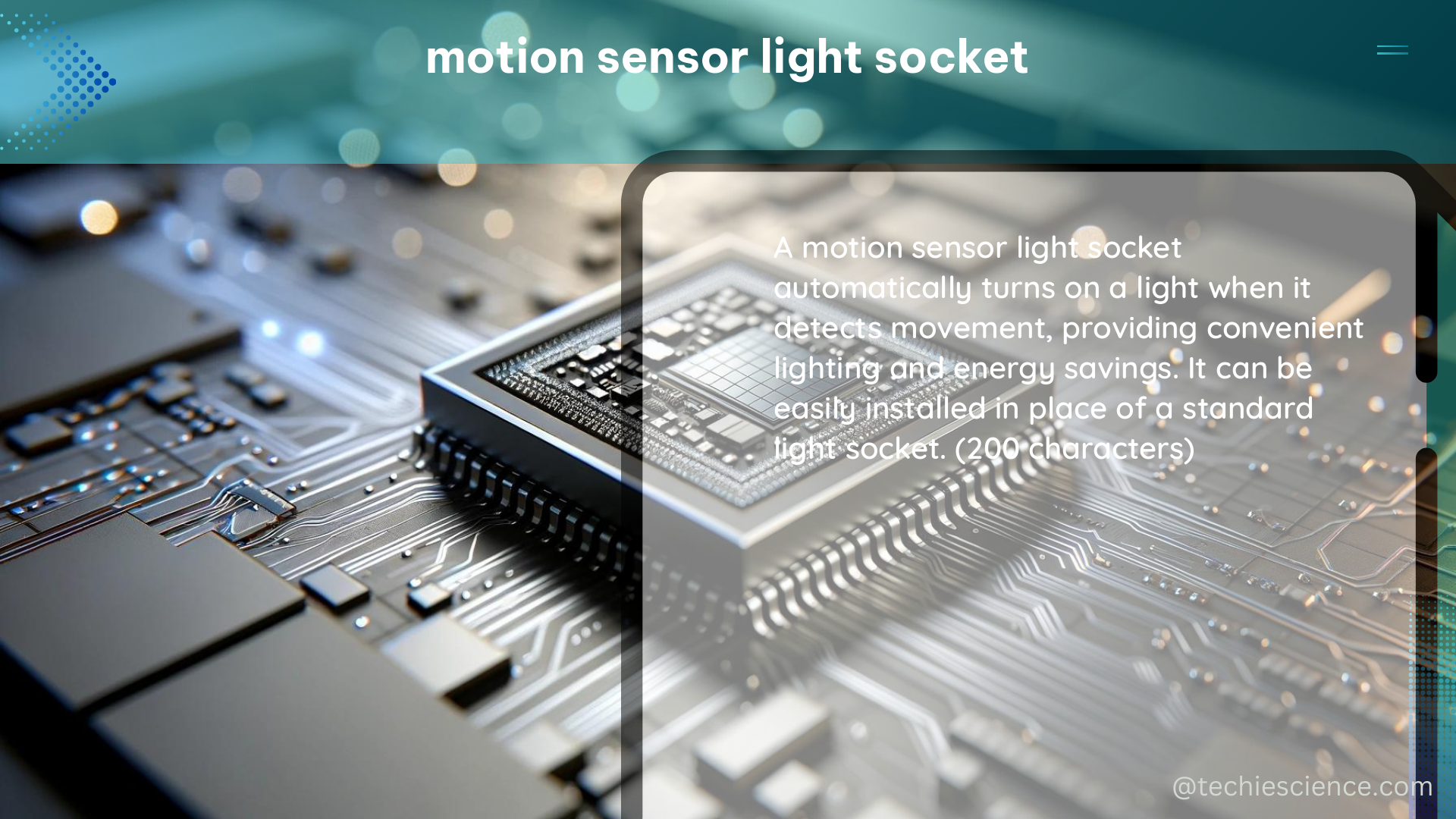The motion sensor light socket is a versatile and energy-efficient solution for lighting control, automatically turning on the light when it detects movement and providing a convenient way to save energy. With a wide range of technical specifications and power consumption profiles, understanding the nuances of these devices is crucial for homeowners and DIY enthusiasts looking to optimize their lighting setup.
Understanding Power Consumption
One of the key factors to consider when selecting a motion sensor light socket is its power consumption. The power consumption of these devices can vary significantly, with some models consuming as little as 0.04 watts per hour (w/hr) when in the off state, while others can consume up to 5.2 w/hr.
For example, the Lutron Maestro MW-600 with MR companion dimmer consumes 3.8 w when off, while the Leviton IPP15-1L consumes 5.2 w. On the other hand, the Lutron Maestro MA600G has a power consumption of 5.1 w when off, and the Legrand Wattstopper RS-150BA consumes only 0.9 w when off.
These power consumption figures are crucial for homeowners looking to minimize their energy costs and reduce their carbon footprint. By choosing a motion sensor light socket with lower power consumption, users can enjoy the convenience of automatic lighting while also saving on their energy bills.
Technical Specifications

In addition to power consumption, it’s important to consider the technical specifications of motion sensor light sockets. These devices often come with a range of features and capabilities that can impact their performance and suitability for different applications.
One key technical specification to consider is the sensor range. Motion sensor light sockets typically have a detection range that can vary from a few feet to several yards, depending on the model. The Lutron Maestro MW-600, for example, has a sensor range of up to 900 square feet, while the Leviton IPP15-1L has a range of up to 180 square feet.
Another important specification is the sensor sensitivity. This determines how quickly the motion sensor will detect movement and trigger the light. Some models may have adjustable sensitivity settings, allowing users to fine-tune the sensor’s responsiveness to their needs.
Additionally, some motion sensor light sockets may come with additional features, such as adjustable time delays, ambient light sensors, or the ability to control multiple lights. Understanding these technical specifications can help users select the right motion sensor light socket for their specific needs.
DIY Installation Considerations
For DIY enthusiasts, installing a motion sensor light socket can be a straightforward process, but it’s important to understand the specific requirements and considerations involved.
One key factor to keep in mind is that motion sensor light sockets typically require a neutral wire for operation. This means that the switch must be connected directly to the power source, and the switch will always need to be in the “on” position for the light to function properly.
When installing a motion sensor light socket, it’s important to follow the manufacturer’s instructions carefully and ensure that all electrical connections are secure and safe. It’s also a good idea to consult with a licensed electrician if you’re unsure about any aspect of the installation process.
Energy Savings and Benefits
The primary benefit of using a motion sensor light socket is the potential for significant energy savings. By automatically turning the light on and off based on detected movement, these devices can help reduce energy consumption and lower utility bills.
In a study of a university building, the use of motion detection sensors and room management systems resulted in daily electricity savings of 142.4 Wh/(m2day) in dormitories, with a savings rate of 28.2%. This demonstrates the substantial impact that motion sensor light sockets can have on energy consumption and costs.
Beyond energy savings, motion sensor light sockets can also provide added convenience and security. By automatically turning on the light when someone enters a room or area, these devices can help homeowners feel more secure and reduce the risk of stumbling in the dark.
Conclusion
The motion sensor light socket is a versatile and energy-efficient solution for lighting control, offering a range of technical specifications and power consumption profiles to suit the needs of homeowners and DIY enthusiasts. By understanding the key factors to consider, such as power consumption, technical specifications, and installation requirements, users can select the right motion sensor light socket for their needs and enjoy the benefits of automatic lighting and energy savings.
References:
- About First Alert Motion Sensors
- Power Consumption for Motion Sensor Light Switches
- Do I need to leave the light switch turned on all the time for a motion sensor to work?
- Energy Savings and Occupancy Detection: A Case Study of a University Building

The lambdageeks.com Core SME Team is a group of experienced subject matter experts from diverse scientific and technical fields including Physics, Chemistry, Technology,Electronics & Electrical Engineering, Automotive, Mechanical Engineering. Our team collaborates to create high-quality, well-researched articles on a wide range of science and technology topics for the lambdageeks.com website.
All Our Senior SME are having more than 7 Years of experience in the respective fields . They are either Working Industry Professionals or assocaited With different Universities. Refer Our Authors Page to get to know About our Core SMEs.